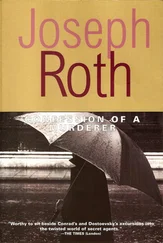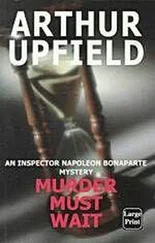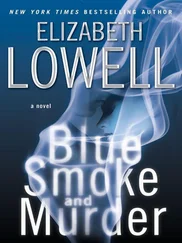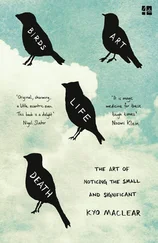Jose Somoza - Art of Murder
Здесь есть возможность читать онлайн «Jose Somoza - Art of Murder» весь текст электронной книги совершенно бесплатно (целиком полную версию без сокращений). В некоторых случаях можно слушать аудио, скачать через торрент в формате fb2 и присутствует краткое содержание. Жанр: Триллер, на английском языке. Описание произведения, (предисловие) а так же отзывы посетителей доступны на портале библиотеки ЛибКат.
- Название:Art of Murder
- Автор:
- Жанр:
- Год:неизвестен
- ISBN:нет данных
- Рейтинг книги:4 / 5. Голосов: 1
-
Избранное:Добавить в избранное
- Отзывы:
-
Ваша оценка:
- 80
- 1
- 2
- 3
- 4
- 5
Art of Murder: краткое содержание, описание и аннотация
Предлагаем к чтению аннотацию, описание, краткое содержание или предисловие (зависит от того, что написал сам автор книги «Art of Murder»). Если вы не нашли необходимую информацию о книге — напишите в комментариях, мы постараемся отыскать её.
Art of Murder — читать онлайн бесплатно полную книгу (весь текст) целиком
Ниже представлен текст книги, разбитый по страницам. Система сохранения места последней прочитанной страницы, позволяет с удобством читать онлайн бесплатно книгу «Art of Murder», без необходимости каждый раз заново искать на чём Вы остановились. Поставьте закладку, и сможете в любой момент перейти на страницу, на которой закончили чтение.
Интервал:
Закладка:
'And now, listen to me,' Robert Wood had said, in a cool, level voice. 'You must never do things properly. You must do them perfectly. Don't forget, April. To do something properly is to do it badly. Because if you let yourself be defeated by little things, you'll immediately lose out in the big ones.' You were right, and I should have understood that earlier. She began the lengthy process of getting dressed.
You also used to say: 'Perhaps you think I like making you suffer, April, but all I want to do is make you understand you have to give everything to art. A little sacrifice is not enough. You have to give everything. Art is voracious.'
As an adolescent, she had not been able to understand this. It was only later she realised it was true. Art demanded everything because, in return, it offered you eternal pleasures. What were physical bodies compared to that? Bodies die a lingering death in hospitals, punctured by rubber tubes, or are beaten to the point of tears with leather belts, but art survives in the remote regions of the untouchable. April had eventually understood and accepted this. Until now, everything had gone well. Now though she was confronting a fearful problem, a gigantic imperfection. But she would emerge triumphant.
You're very clever whoever you are, Artist or model. You're good, I'll give you that. But I am better. I swear that I'm going to stop you destroying another canvas by Van Tysch. I swear I'm going to protect Van Tysch's works with all my strength. I swear I won't allow another of the Maestro's works to be destroyed. I swear I'm not going to make any more mistakes…
Blouse, trousers, her inseparable sunglasses, her short hair with a neat parting on the right. She had managed to get dressed.
She thought about what she was going to do next.
The critics were no use, that was obvious. Had critics ever been any use for anything? A good question, but not the right moment to try to answer it, Miss Wood told herself. The Maestro himself was no help. Yet she did not think it wise to reject the plan out of hand. They had to choose one of the works. And they could not take too many risks: the painting they chose had to be the one the Artist was most likely to target.
There was only one thing in her favour: she knew that the two works destroyed up to now had been directly related to Van Tysch's life, to his past. There was no reason to think it would not be the same with the third. It could well be the Christ, but she needed proof. Something to tell her her choice was not wrong.
She had to find out more about Van Tysch's past. Perhaps there was something in it which could provide the link to one of the 'Rembrandt' works. She picked up the phone and dialled a number.
She had already made her mind up. She would use the only means open to her to delve into the Maestro's past.
7
The worst thing about being a luxury ornament – thinks Susan Cabot – is that you have to be constantly available. Paintings generally have a strict timetable. That is a definite advantage, even though a lot of them have to work more than ten or twelve hours a day But ornaments and artefacts have to be ready to go anywhere at any time, whether it is day or night, whether or not it is raining, or whether they feel like it or not. And when you've been shut up for a fortnight, it's worse still.
She had got the call early that morning. She was not asleep: she was lying in bed with the light on (not her light, but the bedside lamp, an ordinary, non-human lamp) and smoking. She did not usually smoke a lot, but recently she had been overdoing it, perhaps because she felt so nervous. In fact, she had good reason to do so. She had been shut up in rooms like this one for more than two weeks now, cut off from the outside world. They were in small hostels used as store houses for ornaments, run by trusted Foundation employees. Food and everything else they might need was brought to them. Susan had a TV, books and magazines (curiously, there were never any newspapers – she wondered why, and guessed that those in charge thought newspapers might be dangerous). And, of course, she had all the accessories she needed for her work, including a ton of cosmetic and hygienic products, boxfuls of them almost every day. They included revitalisers, exfoliants, moisturisers, firming lotions, conditioners and polishers. Not forgetting the hypothermics, the hyperthermics, skin protectors, retexturisers and desensitisers. And the spare bulbs, too.
Susan was a Lamp designed by Piet Marooder. She needed bulbs.
She had imagined the phone call so often that when it finally came, she could hardly believe it. It was early on Friday morning. Bells from a nearby square lent the long-awaited moment a strange solemnity. 'Oh, shit.'
She leapt out of bed, stared at herself in the bathroom mirror, and after she had washed her face decided she would do. She chose a blouse and a pair of jeans, but of course did not put on any underwear. She checked she had all she needed in her bag. She still had a few minutes to spare.
The woman who had come to fetch her was small, and spoke with a French accent. As Susan climbed into the back of the passenger vehicle, she recognised several of the women she had worked with in the Obberlund.
It took so little time to reach their destination that she suspected they must be in The Hague or another city close by. It was still before dawn when they clambered out into the cool morning air and made their way into a beautiful big classical building {running, running everywhere, like an army). They assembled in the big main room, where they were given instructions. They would be wearing ear and eye protectors. At least it's better than being shut up any longer, Susan consoled herself.
An hour later, and she was ready. She stood in a corner of the room in her usual position: right leg raised, with the luminous sphere attached to her ankle; left leg bent at a right angle, her backside in the air. The pose meant her genitals were in full view of everyone, but the first thing a Lamp learns – inevitably – is not to feel ashamed. She was switched on at half-past nine. Out of the corner of her eye she could make out Opphuls Chairs, and a huge Lamp by Dominique de Perrin made up of a man and a woman which had just been installed on the ceiling. This must be a very important meeting.
Susan's pose meant she was staring at her own thighs. She was thinking of her boyfriend. His name was Ralph, and he was a Mordaieff Chair. At that very moment, Ralph might be somewhere in Europe having to put up with the weight of someone important enough to sit on him. Because of their work obligations, Ralph and Susan only rarely saw each other, even when they were in the same room. She did not envy him: she had been a Chair as well, and she preferred to be a Lamp and hold up a light rather than a person. Her father, a South African engineer who worked in Pretoria, had wanted Susan to study and have a brilliant career. How about four hundred watts, Daddy? Is that brilliant enough for you?
Shortly before half past eleven, a young woman came up to her. It was not the small woman with the French accent or, fortunately, the stupid klutz who had been in charge of them at Obberlund. This one bent down and placed the protectors on her. The world of senses was closed to Susan.
The only non-human thing in the room (which was not very large) were the heavy pair of red curtains, beyond which the twin skyscrapers of The Hague were visible in the distance. Bosch was the last to arrive. He sat on a free Opphuls Chair, and leaned his elbows on its sweaty hands and tense arms. The Chair was breathing under his backside. It was a strange feeling, like sitting on a barrel floating in a calm sea. The piece of furniture was naked, and bent like a hinge on the floor, arms and buttocks raised. A small leather top was placed on them. The Chair's raised legs provided the backrest. The models who were Chairs were strong, and athletically built. They were painted brown, and were perfectly trained. They could be of either sex. Judging by the shape and size of its upper body, Bosch's Chair appeared to be male. Bosch tried not to move too much or to make any sudden gestures: he had sat quite frequently on Chairs of different ages and sexes, but had always been polite and respectful.
Читать дальшеИнтервал:
Закладка:
Похожие книги на «Art of Murder»
Представляем Вашему вниманию похожие книги на «Art of Murder» списком для выбора. Мы отобрали схожую по названию и смыслу литературу в надежде предоставить читателям больше вариантов отыскать новые, интересные, ещё непрочитанные произведения.
Обсуждение, отзывы о книге «Art of Murder» и просто собственные мнения читателей. Оставьте ваши комментарии, напишите, что Вы думаете о произведении, его смысле или главных героях. Укажите что конкретно понравилось, а что нет, и почему Вы так считаете.












